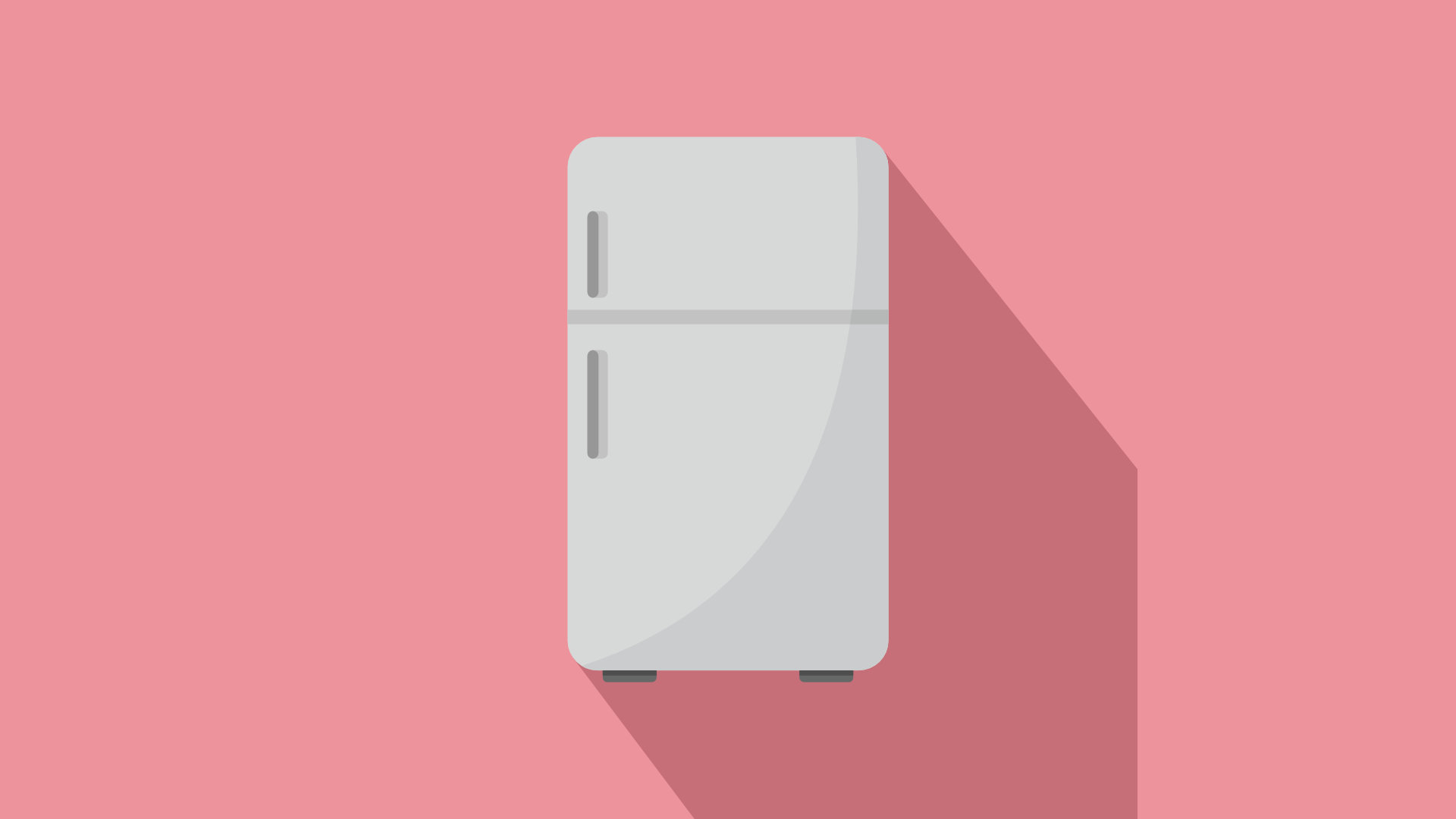
Refrigerator maintenance is an important part of keeping your kitchen clean and your power bill modestly sized. A fridge that has not been maintained will use more electricity than it needs to. It might not reach optimal temperatures, and it might even be more prone to mold growth in the compartments and water lines. Fortunately, keeping a household refrigerator is not hard work – all you need is a schedule.
Most people don’t realize that refrigerator maintenance ranges from simple monthly tasks to things you only need about every five years of fridge ownership. Let’s go down the checklist of every refrigerator maintenance task.
Complete Checklist of Refrigerator Maintenance
- Monthly Maintenance
- Empty and Clean the Shelves
- Throw Away Old Foods
- Ensure the Vents are Clear
- 6-Months Maintenance
- Change the Water Filter
- Deep Clean
- Clean the Drip Pan
- Annual Maintenance
- Dust the Coils
- Grease the Gasket
- Level the Feet
- Defrost
- 5-Year Maintenance
- Clean the Water Lines
- Inspect the Wiring
- Replace the Fans if noisy
Monthly
About once a month, spend an hour on your refrigerator making sure it is still in good condition. Wipe it down, clear out anything at risk of rotting, and trust your nose.
- Empty and Clean the Shelves
Take everything out of your refrigerator and place it close together on the counter. No need for a cooler, this process is fast. Use an all-surface cleaner or a vinegar-based mix to clear out any residue organic material left behind by takeout containers and spills. Clean the walls of the fridge, the top and bottom of every shelf, and even the inside of the drawers.
- Throw Out Old Foods
While you’re refilling the fridge, pay attention to what’s going in. If it’s been in there for more than a month – or you don’t even remember storing it – throw those leftovers out. This is the best way to avoid growing your own fridge pets.
- Make Sure the Ventsare Open
Finally, be sure no boxes or bags are blocking the vents that lead between the freezer and fridge. This is where the cold air comes from, so these spaces need airflow.
6-Months
Twice a year, give your fridge a thorough cleaning, and take care of the water filter.
- Change the Water Filter
Start with the water filter. These filters should be changed approximately every three to nine months, but the importance varies based on how much water or ice you use. Every six months is a good rule-of-thumb for changing out your water filter.
- Deep Clean the Fridge and Freezer
Take the time to deep-clean your refrigerator compartment and the freezer compartment. Scrape and mop out any old spills. Sweep out crumbs. Then thoroughly wipe-down all the reachable surfaces. Use vinegar and baking soda, borax and dish soap to defeat anything you’ll find inside a fridge.
- Clean the Drip Pan
Cooling condensers create condensation – water that beads on the outside of the coils just like water on a soda can. Instead of creating a puddle, refrigerators are designed with an open-air drip pan underneath. It’s found behind the floor-level grate, which is removable with tabs, sometimes with screws. The drip pan receives a small amount of water constantly and it evaporates before the pool becomes a problem.However, dust and other things gather in a moist pan, so it should be washed every few months. Remove the grate and pull out the drip pan, then clean the drip pan with soap and vinegar before returning it.
Annually
Some tasks only need to be done once a year. These make sure your refrigerator is still in good condition from one year to the next.
- Clean the Condenser Coils
The condenser coils create cold, which air is blown over to create cold air. So if dust forms over the condenser, the cold can’t reach the air and your fridge will grow warm. It will also use more electricity than necessary. Unfortunately, the coils are also damp with cold condensation – so dust sticks to them. Once a year, have your fridge’s condenser coils brushed and vacuumed clean.
- Inspect and Grease the Door Gasket
Your door gasket is a rectangular rubber ring that helps the door seal closed. if it is dirty, damaged, or overly dry, it won’t seal properly and cold will escape. Annually inspect your door gasket all the way around. Wipe it down so that it is clean. Then apply a thin layer of petroleum jelly to the gasket to help it seal more firmly for the next year.
- Level the Feet
All appliances work best when level. Grab a bubble level and test the top of the fridge, on all four sides. If the fridge is not level, screw the feet in or out until it is level. This will improve food storage, cooling efficiency, and help the door to not wing open/closed on its own.
- Defrost
If your freezer or refrigerator builds up frost, clear it out at least once a year. Fully defrost the fridge and use pitchers of warm water to speed up the process. Wipe down the defrosted walls with vinegar and try to adjust your fridge settings (or fix your defrost system) to avoid frost buildup in the future.
Every 5 Years
Refrigerators can last a long time, so there are some maintenance tasks that are only needed when an appliance has been in use for several years. Every five years of fridge ownership (starting on the first year if you inherit a fridge with the house), perform these three 5-year maintenance tasks. They’re important for household safety, water cleanliness, and fridge efficiency.
- Clean the Water Lines
Flush out your refrigerator’s water lines. The tubes that lead to the fridge from the wall and the internal tubing through the water filter, ice maker, and water dispenser should all be cleaned with a mild non-toxic solution like vinegar. This kills any mold living in the damp lines and will reveal any impending clogs. It also helps to ensure water quality in ice and cold drinking water for the household.
- Inspection of Wiring
Have an appliance technician open the back panels of the fridge and inspect the wiring. Over time, wire casing or the copper itself can decay – creating electrical hazards. The periodic inspection of your fridge components will ensure that there are no electrical catastrophes (or slow costly power waste) lurking in the future.
- Replace the Fans
The fans in a fridge system are the component type most likely to break and cause problems. The fans are needed to channel cold air over the coils and then circulate cold through the freezer and fridge compartments. If one fan goes out, your entire cold maintenance system could be thrown off. Every five years with your wiring inspection, have your fans looked at and, if performing poorly, have them replced.
—Taking good care of your home fridge is not difficult with a maintenance calendar and checklist. Simply clean your fridge regularly, change the water filter, and schedule the occasional precautionary inspection. Your fridge will stay energy-efficient, cold, and fresh for decades with this kind of attentive treatment.

Your Guide to Whirlpool Microwave Replacement Parts

What to Do When Your Kenmore Dryer Won’t Start

How to Resolve the LG Washer LE Error Code

Why Does My Oven Smell Like Gas? Causes and What to Do

Maytag Dryer Not Heating? Here’s How to Fix It

6 Common Reasons Your Speed Queen Dryer Isn’t Heating

8 Reasons Your Samsung Refrigerator Is Not Cooling

9 Most Reliable Washer and Dryer Brands

How to Get Ink out of Your Dryer the Easy Way

Why Is My Fridge Making Noise That Stops When the Door Is Open?

Frigidaire Refrigerator Error Code H1: Causes & Solutions

How to Clean a Dryer Vent Without Moving the Dryer

9 Reasons Your LG Refrigerator Isn’t Cooling

LG Refrigerator Not Making Ice? Here’s What To Do!


